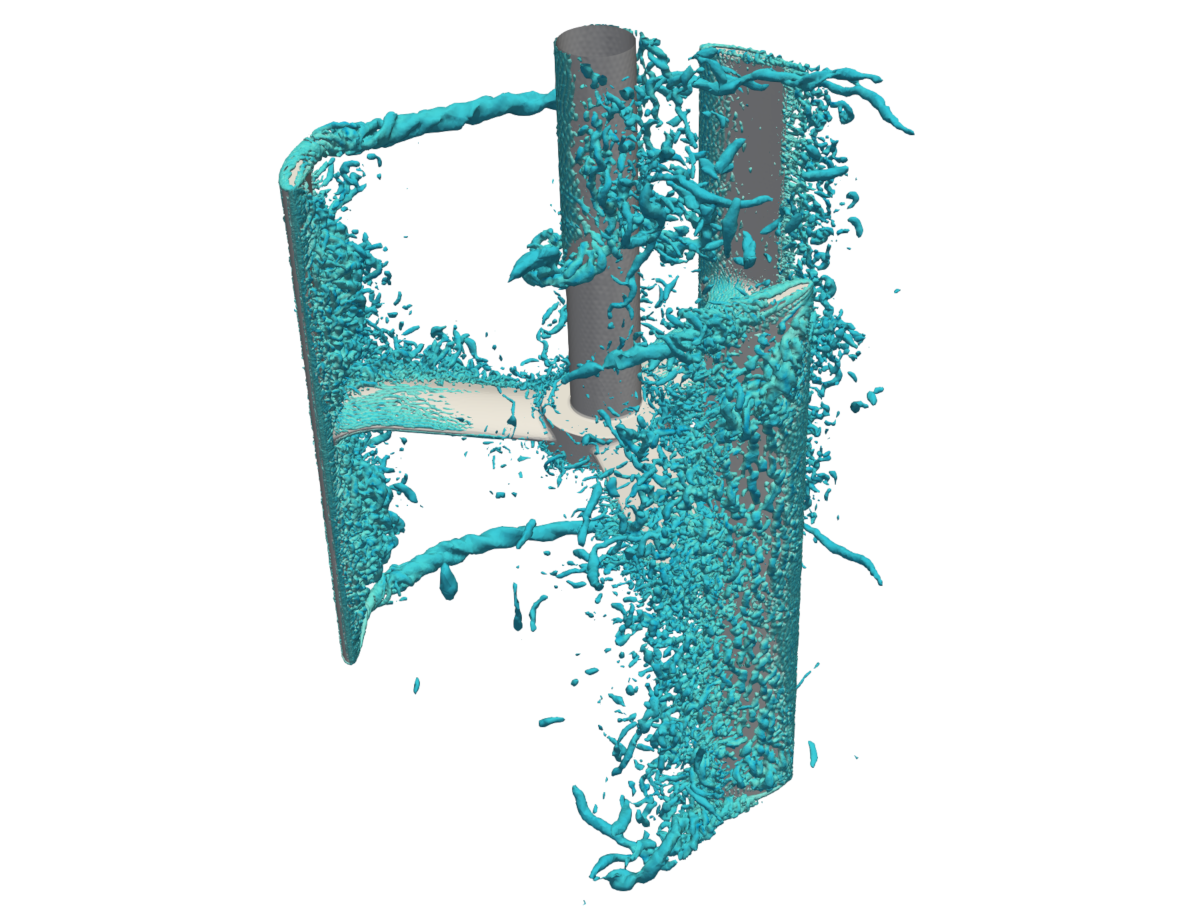Guillaume Balarac, turbulence simulator
Turbulence is a mysterious phenomenon in fluid mechanics. Although it has been observed and studied for centuries, it still holds secrets that physicists and mathematicians strive to unlock. Guillaume Balarac is part of this research community. A researcher at Grenoble INP (at the LEGI Geophysical and Industrial Flows Laboratory), he uses and improves simulations to understand turbulent flows better. His research has given rise to innovations in the energy sector. The researcher, who has recently received the 2019 IMT-Académie des Sciences Young Scientist Award, discusses the scientific and industrial challenges involved in his field of research.
How would you define turbulent flows, which are your research specialty?
Guillaume Balarac: They are flows with an unpredictable nature. The weather is a good example for explaining this. We can’t predict the weather more than five days out, because the slightest disturbance at one moment can radically alter what occurs in the following hours or days . It’s the butterfly effect. Fluid flows in the atmosphere undergo significant fluctuations that limit our ability to predict them. This is typical of turbulent flows, unlike laminar flows which are not subject to such fluctuations and whose state may be predicted more easily.
Apart from air mass movements in the atmosphere, where can turbulent flows be found?
GB: Most of the flows that we may encounter in nature are actually turbulent flows. The movement of oceans is described by turbulent flows, as is that of rivers. The movement of molten masses in the Sun generates a turbulent flow. This is also the case for certain biological flows in our bodies, like blood flow near the heart. Apart from nature, these flows are found in rocket propulsion, the motion of wind turbines and that of hydraulic or gas turbines etc.
Why do you seek to better understand these flows?
GB: First of all, because we aren’t able to do so! It’s still a major scientific challenge. Turbulence is a rather uncharacteristic example – it has been observed for centuries. We’ve all seen a river or felt the wind. But the mathematical description of these phenomena still eludes us. The equations that govern these turbulent flows have been known for two centuries. And the underlying mechanics have been understood since ancient times. And yet, we aren’t able to solve these equations and we’re ill-equipped to model and understand these events.
You say that researchers can’t solve the equations that govern turbulent flows. Yet, some weather forecasts for several days out are accurate…
GB: The iconic equation that governs turbulent flows is the Navier-Stokes equation. That’s the one that has been known since the 19th century. No one is able to find a solution with a pencil and paper. Finding a unique, exact solution to this equation is even one of the seven millennium problems established by the Clay Mathematics Institute. As such, the person who finds the solution will be awarded $1 million. That gives you an idea about the magnitude of the challenge. To get around our inability to find this solution, we either try to approach it using computers, as is the case for weather forecasts — with varying degrees of accuracy — or we try to observe it. And finding a link between observation and equation is no easy task either!
Beyond this challenge, what can a better understanding of turbulent flows help accomplish?
GB: There are a wide range of applications which require an understanding of these flows and the equations that govern them. Our ability to produce energy relies in part on fluid mechanics, for example. Nuclear power plants function with water and steam systems. Hydroelectric turbines work with water flows, as do water current turbines. For wind turbines, it’s air flows. And these examples are only as far as the energy sector is concerned.
You use high-resolution simulation to understand what happens at the fundamental level in a turbulent flow. How does that work?
GB: One of the characteristics of turbulent flows are eddies. The more turbulent the flow, the more eddies of varying sizes it has. The principle of high resolution simulation is to define billions of points in the space in which the flow is produced, and calculate the fluid velocity at each of these points. This is called a mesh, and it must be fine enough to describe the smallest eddy in the flow. These simulations use the most powerful supercomputers in France and Europe. And even with all that computing power, we can’t simulate realistic situations – only academic flows in idealized conditions . These high-resolution simulations allow us to observe and better understand the dynamics of turbulence in canonical configurations.
Along with using these simulation tools, you work on improving them. Are the two related?
GB: They are two complementary approaches. The idea for that portion of my research is to accept that we don’t have the computing power to simulate the Navier-Stokes equation in realistic configurations. So the question I ask myself is – how can this equation be modified so that it can be possible to solve with our current computers, while ensuring that the prediction is still reliable? The approach is to solve the big eddies first. And since we don’t have the power to make a fine enough mesh for the small eddies, we look for physical terms, mathematical expressions, which replace the influence of the small eddies on the big ones. That means that we don’t have the small eddies in this modeling, but their overall contribution to flow dynamics is taken into account. This helps us improve simulation tools by making them able to address flows in realistic conditions.
Are these digital tools you’re developing used solely by researchers?
GB: I seek to carry out research that is both fundamental and application-oriented. For example, we worked with Hydroquest, on the performance of water current turbines to generate electricity. The simulations we carried out made it possible to assess the performance loss due to the support structures, which do not contribute to capturing the energy from the flow. Our research led to patents for new designs, with a 50% increase in yield.
More generally, do energy industry players realize how important it is to understand turbulent flows in order to make their infrastructures more efficient?
GB: Of course, and we have a number of partners who illustrate industrial interest for our research. For example, we’ve adopted the same approach to improve the design of floating wind turbines. We’re also working with General Electric on hydroelectric dam turbines. These hydraulic turbines are increasingly being used to operate far from their optimal operating point, in order to mitigate the intermittence of renewable solar or wind energy. In these systems, hydrodynamic instability develops, which has a significant effect on the machines’ performance. So we’re trying to optimize the operation of these turbines to limit yield loss.
What scientific challenges do you currently face as you continue your efforts to improve simulations and our understanding turbulent flows?
GB: At the technical level, we’re trying to improve our simulation codes to take full advantage of advances in supercomputers. We’re also trying to improve our numerical methods and models to increase our predictive capacity. For example, we’re now trying to integrate learning tools to avoid simulating small eddies and save computing time. I’ve started working with Ronan Fablet, a researcher at IMT Atlantique, on precisely this topic. Then, there’s the huge challenge of ensuring the reliability of the simulations carried out. As it stands now, if you give a simulation code to three engineers, you’ll end up with different models. This is due to the fact the tools aren’t objective, and a lot depends on the individuals using them. So we’re working on mesh and simulation criteria that are objective. This should eventually make it possible for industry players and researchers to work with the same foundations, and better understand one another when discussing turbulent flows.






Leave a Reply
Want to join the discussion?Feel free to contribute!